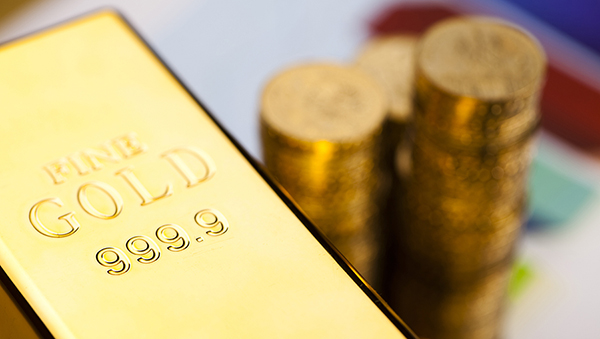
Gold may have finished 2014 on a down note, but analysts still see the yellow metal as one of the best safe-haven investments heading into 2015. With thousands of years of history behind it, gold should be primed as a strong buy early this year.
According to The Telegraph, experts predict gold will continue to average around $1,200 an ounce throughout 2015 as global economies continue their tediously slow recoveries. In 2014, despite all of the warning signs, the U.S. dollar continued to gain strength and commodities markets were riddled with turmoil and controversy, yet gold maintained its safe-haven status.
Gold prices are about to end the year virtually unchanged after the past 12 months, finishing on December 29th at $1,180 an ounce after starting the year at $1,205 an ounce. Many analysts predicted gold price drops throughout the year, but the crash never happened. Now, Goldman Sachs has even set its long-term forecast for the price of gold to $1,200 an ounce for the next three years.
The Telegraph is reporting that Goldman Sachs “estimates that this is the break-even price for the majority of gold-miners once all costs such as exploration, management and mine repairs are included. As such, the price of gold may well fall below $1,200 in the year ahead, but lower prices would force loss-making miners out of business and reduce supply, helping prices to recover eventually.”
Hunter Hillcoat, from Investec’s natural resources team, is predicting a price of $1,150 an ounce for next year. He told The Telegraph that Investec sees “a resurgence in the US dollar, rising interest rates and falling inflation as challenges for the year ahead.”
In addition to strength of the US dollar, global demand also has a large effect on the price of gold. In the last three years, this demand has been relatively weak. In fact, the World Gold Council has shown year-over-year gold demand falling by 6 percent in the third quarter of 2014.
However, The Telegraph is reporting a stable long-term outlook for gold demand. Jewelry purchases, which make up half of the total gold demand, are supported by strong buying in India and China. According to the World Gold Council, demand in India has jumped 60 percent in the third quarter. Any increase in demand from India and China is a huge boost for gold since combined they make up 54 percent of global gold purchases.
Finally, since quantitative easing began in 2009, central banks around the world have increased gold buying by significant amounts in order to boost their reserves. Russia has accounted for 50 percent of all central bank gold buying.
Even as the world remains erratic and economies are increasingly volatile, one stable investment to look at should be gold. Most experts agree that a well-diversified portfolio should have at least 5-10 percent invested in gold as insurance against an unpredictable future.

